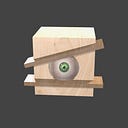Member-only story
Summation and the Definite Integral

Calculating the area of a two dimensional object or the volume of a three dimensional object has been a subject of study for mathematicians and natural philosophers since antiquity. When the enclosed area or volume is a rectangle or a cube the calculations are simple enough. However, when the enclosed area is irregularly shaped our only option is to break the area up into smaller areas with shapes we can easily calculate, and then sum those smaller areas (or volumes) together to reach an estimate of the area under consideration. If we break the subject area into infinitely many infinitesimally small regions we can reach exact values for the area or volume under consideration. This process of summing an infinite number of infinitely small areas is called integration.
The definite and indefinite integrals
There are two types of integrals based on the results they produce. One is called the definite integral and it produces a number, a value that can be characterized as the area under a curve. The definite integral is identified by the upper and lower limits associated with the integral symbol. These limits serve as boundaries on the area we wish to calculate.

On the other hand, the indefinite integral produces an equation, a second function, the anti-derivative. It doesn’t have limits of integration associated with the integral symbol. In this case, given a function f(x), the objective is to determine it’s anti-derivative F(x), a process which often results in an entire set of functions that can be translated up or down along the y axis by some constant C (see my article on anti-derivatives here). One of the reasons these second functions F(x), or set of functions F(x) + C, are important is because we use them to calculate the definite integral as such:
When studying integration most of the effort is in mastering the techniques involved in finding the general anti-derivative, F(x) + C, of those functions f(x) that have anti-derivative solutions over the given domain, however, in this article we’re going to focus on the definite integral because it’s the definite integral that can give us the best…
